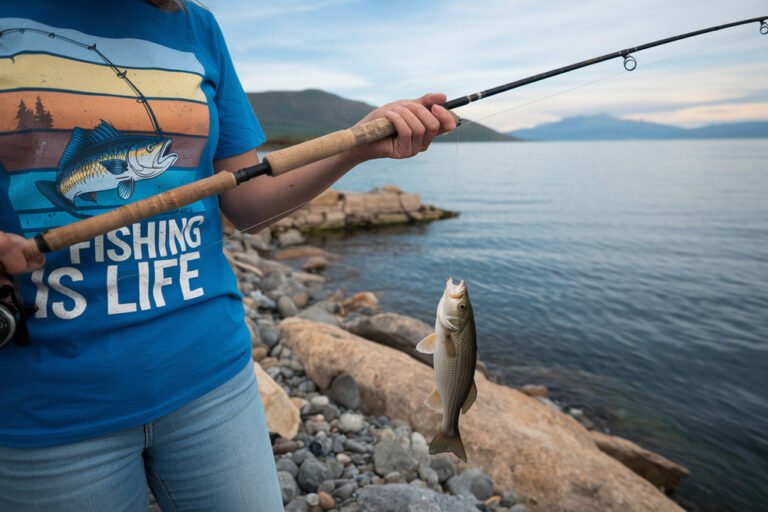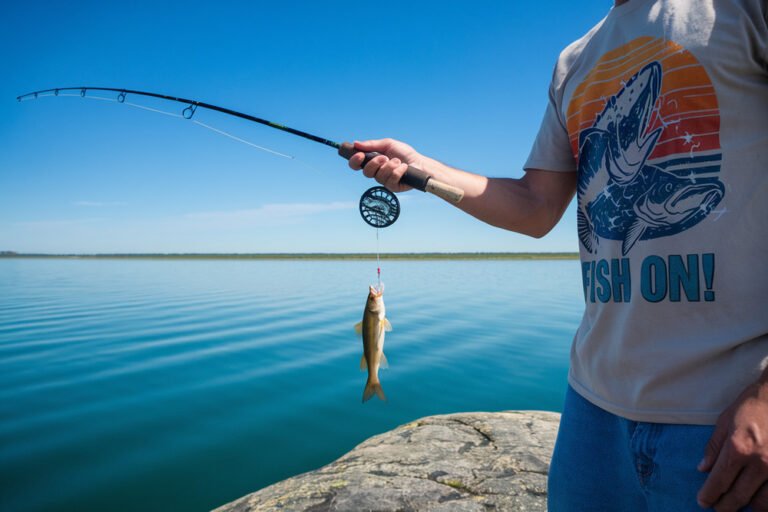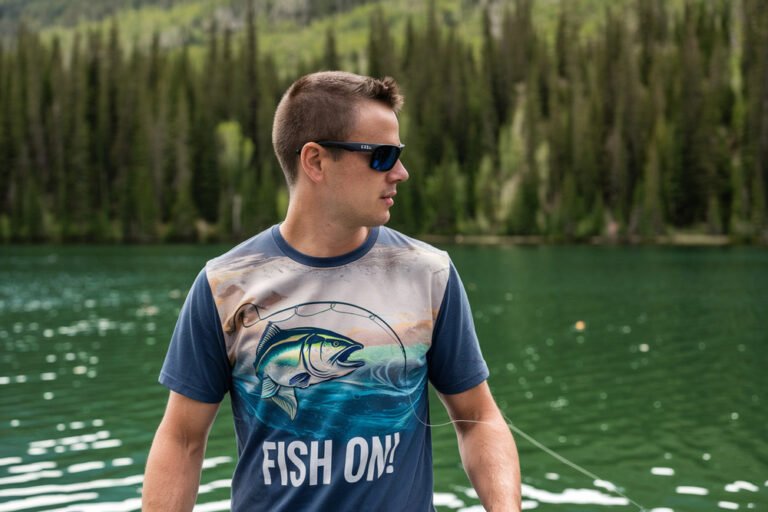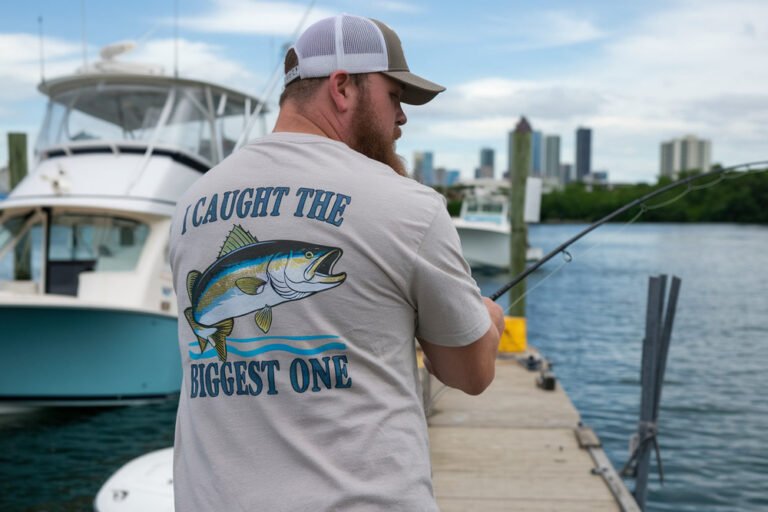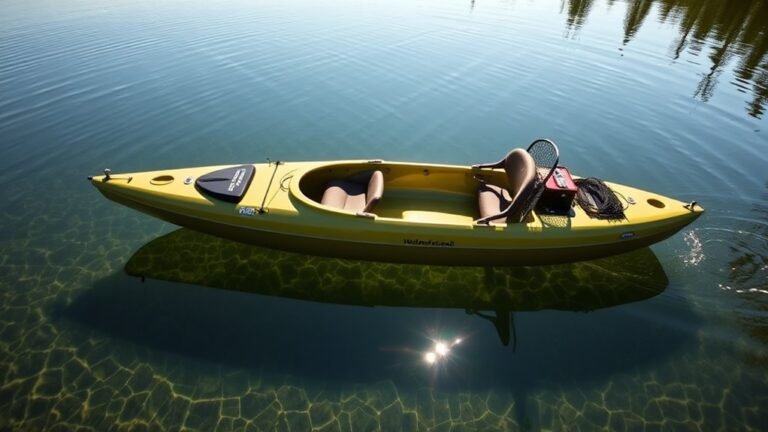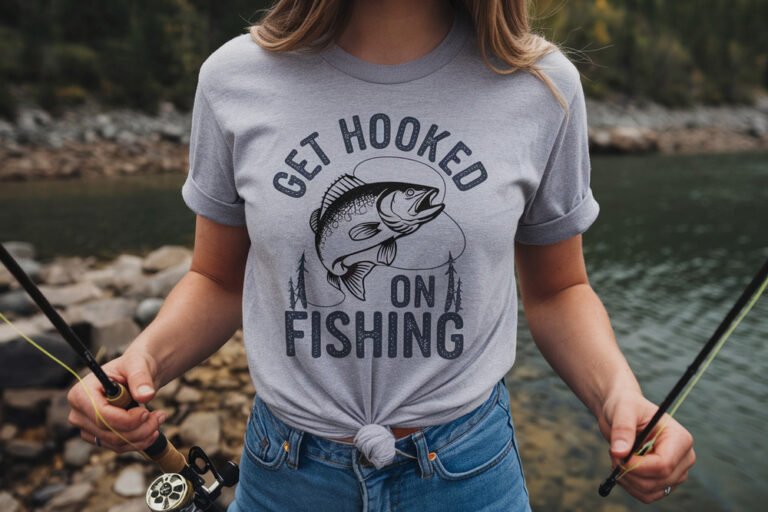3 Best Kayaks for Fly Fishing
Finding the perfect kayak for fly fishing is about more than just transportation; it's about choosing a reliable companion tailored to your needs for stability, storage, and maneuverability.
Whether you're fishing in calm lakes or navigating gentle rivers, knowing the key differences among top-rated kayaks will influence your fishing success.
Let's delve into what sets these three standout options apart.
Key Takeaways
- ICROSS 3000 offers superior stability with a 660-pound capacity and spacious 118-inch length, making it ideal for fly fishing.
- Inflatable kayaks with quick setup times (3-15 minutes) and high-pressure inflation provide excellent rigidity for casting.
- Wide hulls and stability-focused designs allow anglers to stand and cast comfortably while maintaining balance.
- Rod holders within arm's reach and ample storage space are essential features for efficient fly fishing from a kayak.
- SuperTough PVC construction and multi-layer materials ensure durability against impacts and extended exposure to water conditions.
3000 Inflatable Fishing Kayak with Kayak Seat
Prices pulled from the Amazon Product Advertising API on:
Product prices and availability are accurate as of the date/time indicated and are subject to change. Any price and availability information displayed on [relevant Amazon Site(s), as applicable] at the time of purchase will apply to the purchase of this product.
The ICROSS 3000 is ideal for anglers who prioritize portability and stability. Weighing just 27 pounds, this inflatable kayak supports up to 660 pounds, accommodating all your gear and catch. It sets up in 3-5 minutes with the included pump, handling pressures up to 18-20 PSI, though 7-10 PSI is optimal.
The package includes an aluminum kayak seat with a rod holder, a 4-piece paddle, a safety leash, and a detachable fin. Its dimensions—118 inches long and 37 inches wide—offer ample space for standing and casting. Users rate its stability and spaciousness a perfect 5 stars for performance in both calm waters and rivers.
Best For: Anglers and outdoor enthusiasts seeking a lightweight, stable fishing vessel.
Pros:
- Exceptional 660-pound capacity despite being lightweight at 27 lbs
- Quick 3-5 minute setup with comprehensive accessories
- Supports seated paddling and stand-up fishing with excellent stability
Cons:
- Requires inflation/deflation compared to hard-shell kayaks
- Limited to green and brown color options
- Needs regular maintenance to prevent punctures in PVC material
INTEX Excursion Pro K1 Inflatable Kayak Set
Prices pulled from the Amazon Product Advertising API on:
Product prices and availability are accurate as of the date/time indicated and are subject to change. Any price and availability information displayed on [relevant Amazon Site(s), as applicable] at the time of purchase will apply to the purchase of this product.
The INTEX Excursion Pro K1 Inflatable Kayak Set is perfect for adventure-seeking anglers in need of a portable fly fishing solution. Its high-pressure inflation system ensures exceptional stability, making it hard to tip even when casting or reeling in. The SuperTough PVC construction provides durability against impacts and sun exposure, while two removable skegs enhance control in various water conditions.
Setting up takes about 15 minutes. Features include detachable fishing rod holders, a GoPro mount, and an adjustable bucket seat for comfort during long fishing sessions. With a 400-pound weight capacity, there's ample room for gear, and stainless steel D-rings allow you to secure dry bags.
While not designed for high-speed paddling, it's ideal for calm waters and recreational fishing trips. Pros include excellent stability, a high weight capacity, and quick setup with useful fishing accessories. Cons are less efficiency for upstream paddling, lower quality paddles, and potential scuffs and fold marks over time.
Best For: Casual anglers and recreational kayakers seeking a portable, easy-to-transport fishing kayak for calm waters and lakes.
PLUSINNO Foldable Fishing Landing Net with Telescopic Handle
Prices pulled from the Amazon Product Advertising API on:
Product prices and availability are accurate as of the date/time indicated and are subject to change. Any price and availability information displayed on [relevant Amazon Site(s), as applicable] at the time of purchase will apply to the purchase of this product.
Fly fishing enthusiasts will value PLUSINNO's foldable landing net for its portability and practical design for kayak fishing. The telescopic handle extends from 28 to 34 inches, providing the necessary reach for landing fish, while the rubber-coated, non-snag mesh ensures safe release.
Its second-generation floating design, with buoyant tubes along the sides, prevents sinking if dropped. Weighing just 14 ounces, the net won't burden your kayak, and the handle's carbon fiber and fiberglass construction includes a skid-resistant EVA grip. Suitable for both freshwater and saltwater, the snagless coated nylon mesh and sturdy build make it a dependable choice for kayak fishing adventures.
Best For: Kayak and fly fishing fans needing a portable, lightweight net for catch-and-release in diverse waters.
Pros:
- Floating design with buoyant tubes prevents loss in water
- Telescopic handle provides excellent reach (28-34 inches) and is easy to store
- Fish-friendly rubber-coated mesh is durable for fresh and saltwater
Cons:
- 15.5-inch hoop may be small for larger fish
- 14.11 oz weight might be heavy for extended use
- Telescopic handle may need regular maintenance to avoid sticking or corrosion
Factors to Consider When Choosing Kayaks for Fly Fishing
Selecting the right kayak for fly fishing requires careful consideration of several key factors that'll directly impact your experience on the water. You'll need to evaluate practical aspects like the kayak's weight for easy transport, available storage space for gear, and stability ratings that determine if you can safely stand while casting. The kayak's material composition, durability against various weather conditions, and strategic placement of rod holders will greatly influence both your fishing success and overall satisfaction with your purchase.
Weight and Transport Ease
The weight and transport features of your fly fishing kayak are crucial for a great fishing experience. Opt for models around 27 pounds for easy carrying to remote spots and vehicle loading. Inflatable kayaks, stored in carry bags, are ideal for small vehicles and outdoor adventures, with quick setup times of 3-5 minutes.
Consider kayaks with a weight capacity of around 660 pounds to support your gear while ensuring water stability. Transport-friendly features like backpack straps are valuable for reaching difficult fishing locations, aiding in navigating rough terrain with ease.
Storage Space Available
In a well-designed fly fishing kayak, ample storage space is crucial for organizing and accessing gear. Models like the INTEX Excursion Pro K1 offer bow and stern storage for tackle boxes, landing nets, and dry bags. Opt for kayaks with D-rings and specialized compartments to efficiently organize equipment.
The ICROSS 3000 boasts a 660-pound capacity, providing ample room for both angler and gear. Longer kayaks often offer more storage space, enhancing organization. Also, consider the kayak's stability for easy access to stored items and balance storage capacity with overall weight for transport ease.
Stability While Standing
For successful fly fishing from a kayak, especially when standing and casting, stability is key. Focus on hull design and width, as wider hulls offer more resistance to tipping, providing a solid foundation for casting. Inflatable kayaks with high-pressure inflation are surprisingly stable, and those with higher weight capacities tend to offer better stability and balance.
Experienced anglers find that stable kayak designs enhance fishing success, allowing them to stand confidently while casting. Proper balance improves casting control and adaptability to changing water conditions.
Rod Holder Placement
Strategic rod holder placement is crucial for maximizing your fly fishing experience from a kayak. Position rod holders within comfortable arm's reach to quickly switch between rods or adjust your tactics. Opt for adjustable or removable holders tailored to your fishing style and space needs.
Mount rod holders closer to the kayak's centerline to maintain stability and prevent tipping when casting or fighting a fish. Plan for multiple holder locations for flexibility in trying different techniques and rod combinations. Choose kayak models with versatile rod holder systems to accommodate various rod sizes and types, ensuring adaptability to changing fishing conditions.
The right placement and holder configuration enhance efficiency and success on the water.
Material and Durability
When choosing a kayak for fly fishing, prioritize material quality and durability for long-term performance. Opt for kayaks made from SuperTough PVC or similar high-grade materials to ensure structural strength and resistance to daily wear. Multi-layer laminate construction provides added protection against punctures and UV damage.
Consider high-pressure inflatable kayaks, as they retain their shape better than standard inflatables and offer improved water stability. Some models include rubber-coated netting or snagless designs to protect both your catch and vessel during fishing. Check the kayak's weight capacity to accommodate your weight, gear, and extra equipment, ensuring it can handle the load without structural stress for maximum lifespan.
Water Type Compatibility
When choosing a kayak for fly fishing, consider the water type you'll frequent. Kayaks suited for calm lakes may not perform well in strong river currents, making it crucial to match your kayak to your fishing environment. For rivers and streams, opt for kayaks with removable skegs or fins to maintain control and maneuverability.
Inflatable kayaks offer versatility and stability for various water conditions, allowing you to stand and cast confidently and adapt to different locations. Also, evaluate the kayak's weight capacity relative to your fishing environment. A kayak that excels in calm waters might falter in rougher conditions when loaded with gear, so ensure it maintains stability and performance in your chosen fishing spots.
Setup and Inflation Time
Choosing the right inflatable kayak for fly fishing involves considering setup efficiency to maximize your water time. Ideal models offer quick setup, typically between 3 to 15 minutes, depending on design and pump type. High-pressure inflation provides the necessary rigidity and stability for casting, with spring-loaded valves speeding up both inflation and deflation.
Opt for kayaks with high-output pumps that can inflate under 5 minutes, allowing more focus on fishing. Ensure the kayak is lightweight and portable for easy transport to various fishing spots. A compact storage size is also practical for those with limited space at home.
Maximum Load Capacity
When selecting a kayak for fly fishing, understanding its maximum load capacity is crucial. Most inflatable kayaks support 400 to 660 pounds, accommodating anglers and their gear. Ensure your kayak's capacity comfortably exceeds your combined weight, maintaining performance and stability. For extended trips or remote fishing, opt for models with 600 pounds or more for added gear flexibility. Always check manufacturer's specifications; exceeding load limits can compromise safety and maneuverability.
Frequently Asked Questions
How Do I Maintain Balance While Standing to Cast in a Fishing Kayak?
You'll maintain better balance by keeping your feet shoulder-width apart and positioning them parallel to the kayak's centerline. Keep your knees slightly bent to absorb movement, and engage your core muscles. Practice in calm, shallow water first, and use your paddle as a stabilizer by placing it across the gunwales. Consider adding aftermarket stabilizers or outriggers for extra stability, and always wear a life jacket while standing.
What's the Best Way to Store Fishing Rods on a Kayak?
Like a well-organized tackle box, your kayak needs smart rod storage solutions. You'll find several effective options: mount flush-mounted rod holders behind your seat for trolling, install vertical rod holders on the sides for easy access, or use horizontal rod storage systems that attach to your kayak's rails. You can also consider behind-seat rod floaters or internal storage compartments if your kayak has them, keeping your rods secure and protected while paddling.
Can I Add an Anchor System to My Fishing Kayak?
Yes, you can add an anchor system to your fishing kayak, and it's a practical upgrade for maintaining position while fishing. You'll need an anchor trolley kit, which includes pulleys, rope, and mounting hardware. Install the trolley system along your kayak's side, allowing you to adjust your anchor position from bow to stern. Choose between a traditional fluke anchor (3-5 pounds) or a quick-deploy drift anchor, depending on your fishing conditions.
How Do I Prevent My Fly Line From Tangling in Wind?
To prevent your fly line from tangling in windy conditions, you'll need to make several adjustments to your technique. Strip shorter lengths of line, and keep your casting stroke more compact and powerful. You can also try positioning yourself with the wind at your back when possible. Using a line tray or stripping basket will help manage loose line, while heavier weight-forward lines can provide better control in breezy conditions.
What Safety Gear Should I Carry Specifically for Fly Fishing Kayaking?
You'll need an absolute mountain of safety gear to stay alive out there! Start with the essentials: a properly fitted PFD (life jacket), a whistle for signaling, and a waterproof phone case. Don't forget your first aid kit, spare paddle, bilge pump, and anchor system. You should also carry a headlamp, weather radio, and dry bag for storing gear. For fly-fishing specific items, pack nippers, forceps, and line cutters within easy reach.
Conclusion
For both seasoned anglers and beginners, these inflatable kayaks provide excellent portability and performance. The ICROSS 3000 offers stability for confident casting, while the INTEX Excursion Pro K1 ensures a quick setup for more fishing time. Consider your specific needs, like weight capacity and storage, to find a kayak that suits your fishing style and local water conditions.


